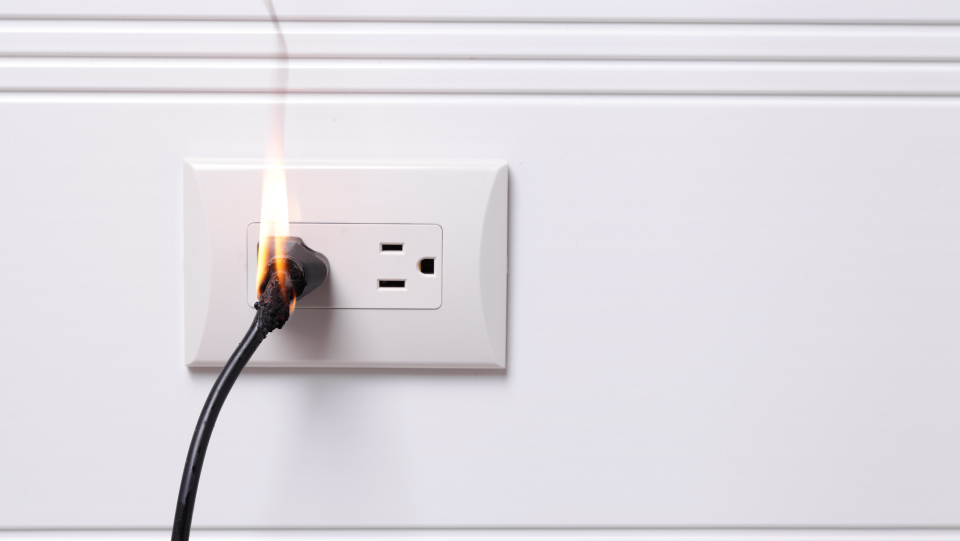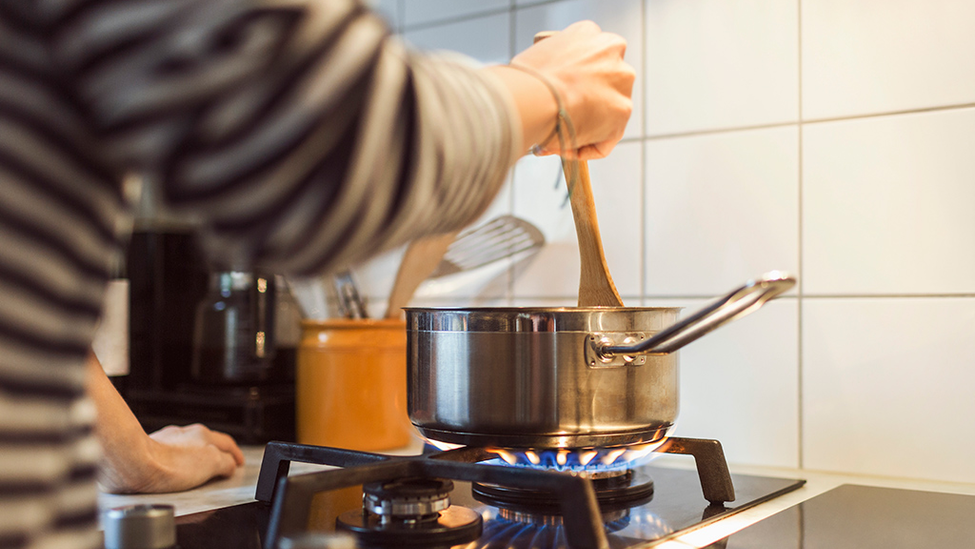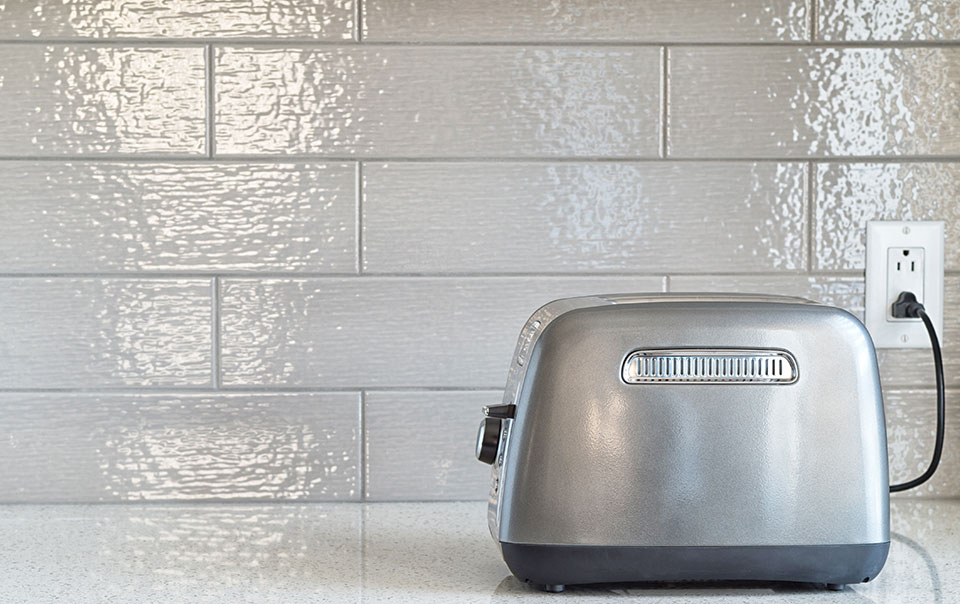How to Use a Fire Extinguisher

(DESCRIPTION)
Travelers red umbrella logo. Text, How to Use a Fire Extinguisher. An animation shows a fire inside an open toaster oven on a kitchen counter. A hand holding a phone appears in the foreground with 911 on the call screen.
(SPEECH)
SPEAKER: In the event of a fire emergency, call 911 before attempting to put out the fire, and evacuate everyone from your home. Then
(DESCRIPTION)
A view of the front door from inside the house has five circles over it, each with a different family member in it, each with a concerned look: a boy, a mom, a dad, a grandpa, and a dog. They all leave their circles leaving white circles behind. The circles pop.
(SPEECH)
make sure you have a clear path out of your home, one that's not blocked by fire or smoke.
(DESCRIPTION)
The front door opens, and an arrow points out the door. We go back to the fire in the toaster oven.
(SPEECH)
If the fire is small and contained, say, the size of a wastebasket, go ahead and use a fire extinguisher to put out the fire.
(DESCRIPTION)
A wastebasket appears in a circle next to the fire. A fire extinguisher appears in the foreground. A row of three fire extinguishers appears on a blue background. They are each labeled underneath: Water, Powder, CO2.
(SPEECH)
Keep in mind, there are a variety of fire extinguisher types, and not every fire extinguisher is appropriate for every fire. Make sure you have the right type for your home before an emergency occurs.
(DESCRIPTION)
The Powder fire extinguisher in the center becomes larger. The fire extinguisher is now in front of the fire, labeled to be 8 feet away.
(SPEECH)
Next, stand at least eight feet from the flames and fight the fire using the PASS method, Pull, Aim, Squeeze, and Sweep.
(DESCRIPTION)
A close up of the top of the extinguisher shows a thin black wire bent into a loop at the end being pulled horizontally from the extinguisher handle.
(SPEECH)
One, pull the pin from the extinguisher, unlocking the operating lever and making it ready to use. Two, aim low, pointing the nozzle at the base of the fire.
(DESCRIPTION)
The fire extinguisher in the foreground of the kitchen is shown being held slightly above the level of the fire, the black hose pointing toward the fire.
(SPEECH)
Three, squeeze the lever to discharge the extinguisher. And
(DESCRIPTION)
A close up shows the duck bill shaped handle, the top and bottom of the beak being squeezed together.
(SPEECH)
four, sweep from side to side, remembering to aim at the base of the fire.
(DESCRIPTION)
A cloud of smoke comes from the nozzle and covers the toaster oven. The hose is sweeping left and right over the toaster oven.
(SPEECH)
Continue to sweep back and forth until the fire is out. Talk to your Travelers representative or independent agent today.
(DESCRIPTION)
Travelers red umbrella logo. Text, travelers.com. Travelers Casualty and Surety Company of America and its property casualty affiliates. One Tower Square, Hartford, CT 06183. This material does not amend, or otherwise affect, the provisions of any insurance policy issued by Travelers. It is not a representation that coverage does or does not exist for any particular claim or loss under any such policy. Coverage depends on the facts and circumstances involved in the claim or loss, all applicable policy provisions, and any applicable law.
You should know exactly how to use a fire extinguisher in the event a fire develops and you feel you are safely able to fight it. Before you are faced with the need to use one, be sure you have the right type of fire extinguisher on hand. It is recommended that only those trained in the proper use of fire extinguishers consider using them when appropriate.
Call for help before attempting to extinguish a fire. A fire may grow out of control more quickly than you anticipate. It is wise to have help on the way.
Determine a safe evacuation path before approaching the fire. Do not allow the fire, heat or smoke to come between you and your evacuation path.
Attack the Fire Using the PASS Method:
Pull the pin – by pulling the pin, the operating lever should unlock and allow you to discharge the extinguisher.
Aim low – point the extinguisher hose/nozzle at the base of the fire.
Squeeze the lever – this should discharge the extinguishing agent. Some extinguishers may have a button or other means of activation.
Sweep from side to side – while you are aiming at the base of the fire, you should sweep back and forth until the fire is extinguished. If the fire reignites, repeat the process.
Remember Additional Safeguards:
- Keep your back to an exit so that there is a viable means of retreating from the fire.
- Stand at least 8 feet from the fire and begin PASS.
- If the fire does not extinguish immediately, leave the fire.
- Have the fire department survey the area to ensure the fire has been extinguished and that there are not concealed areas where a fire could be smoldering.
- If an extinguisher is used (even partially), it needs to be recharged or replaced.
Fire Extinguisher Maintenance
Fire extinguishers should be regularly checked to ensure the following:
- The extinguisher is not blocked by furniture, doors or anything that may limit access during an emergency.
- It is properly mounted in the path of an exit and away from heat sources.
- The pressure is at the recommended level. Your extinguisher may have a gauge that indicates when the pressure is too high or too low.
Portable Fire Extinguishers – Test Your Knowledge
Think you know enough about fire extinguishers? Test your knowledge.
Learn more >



